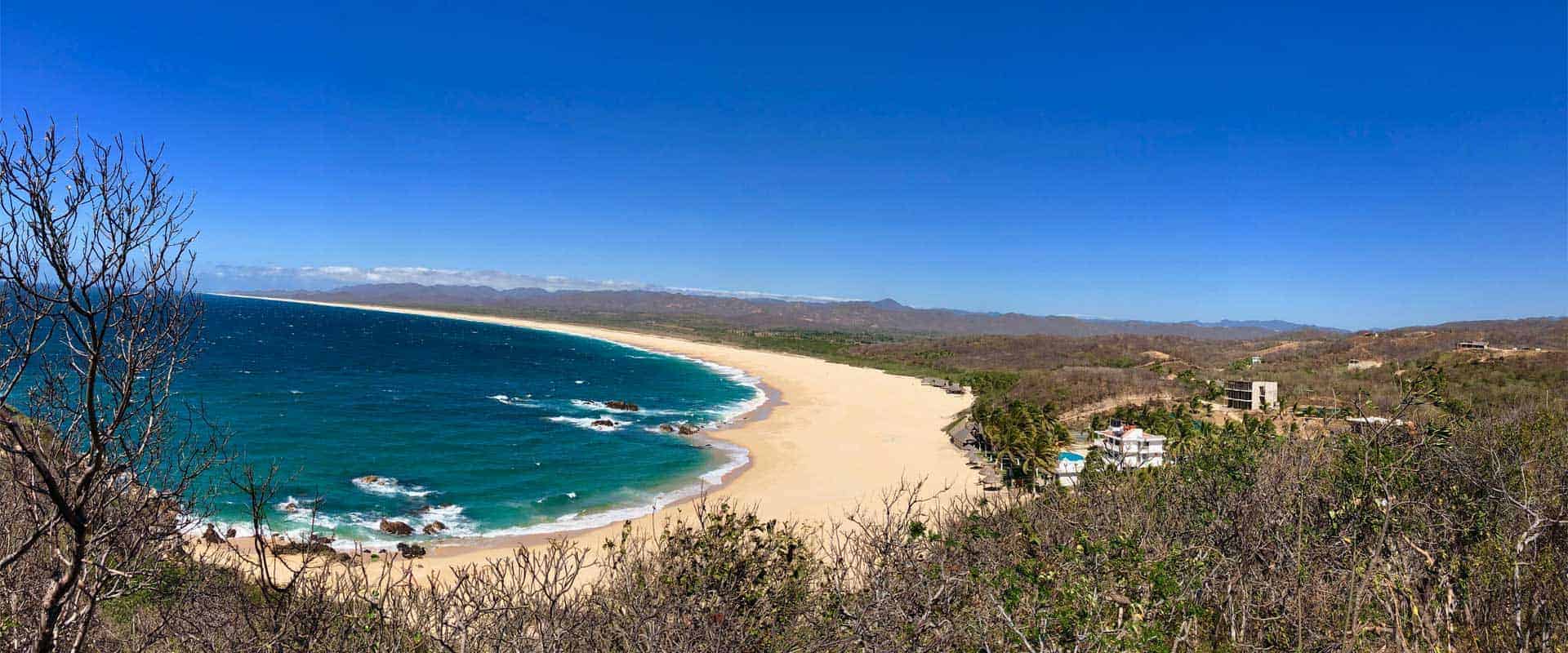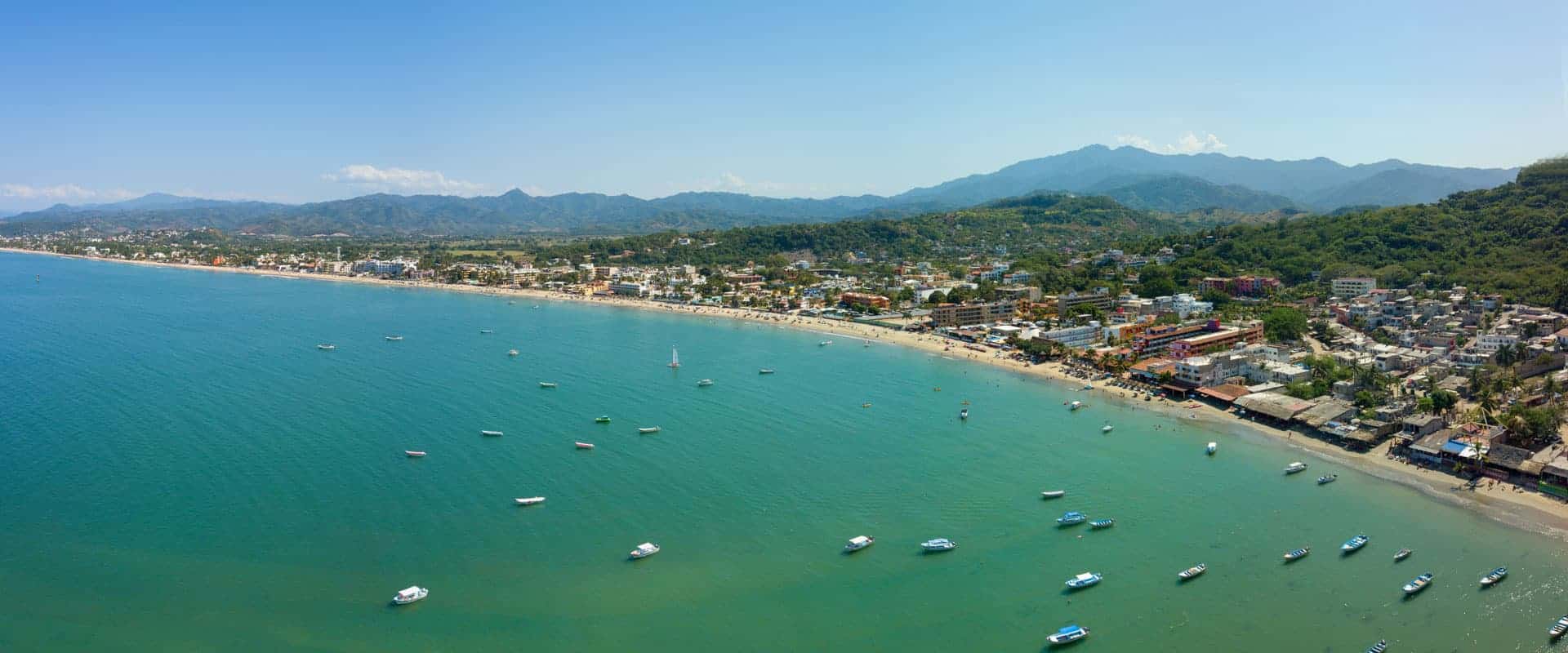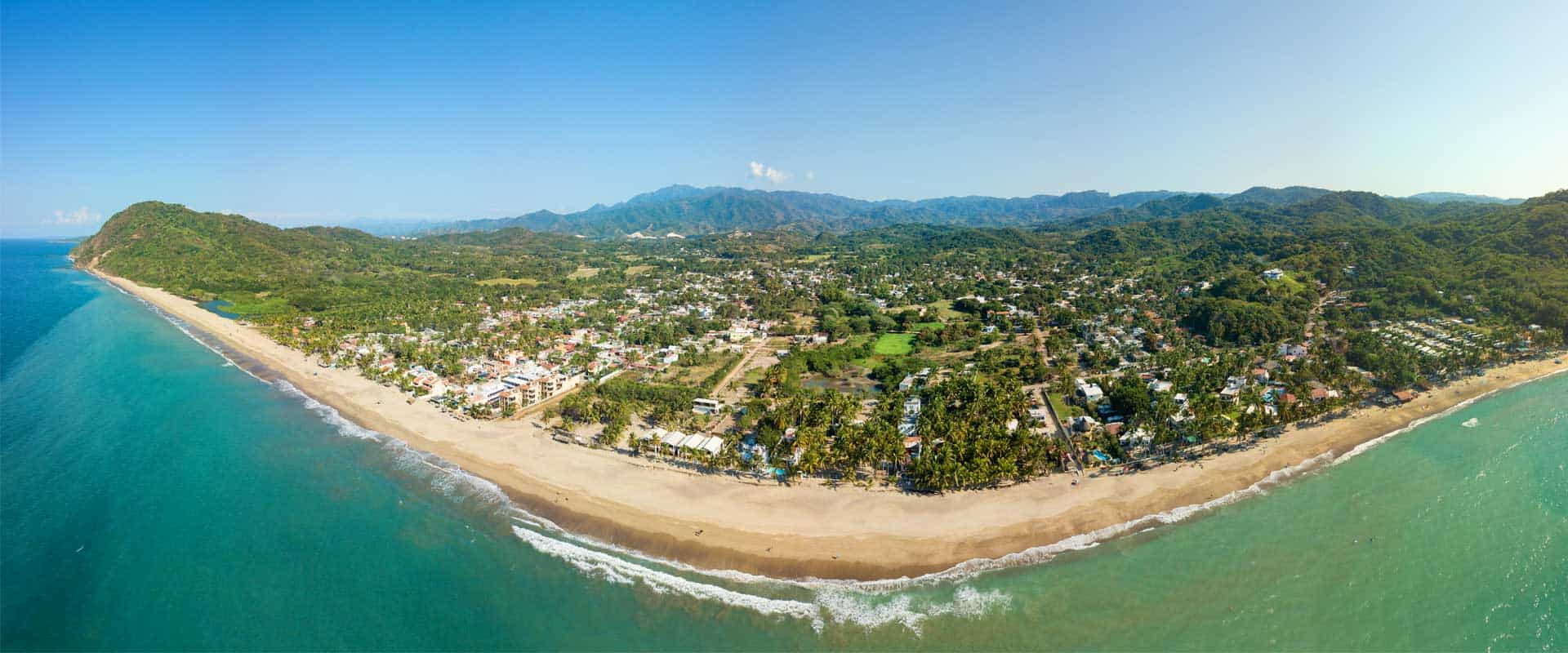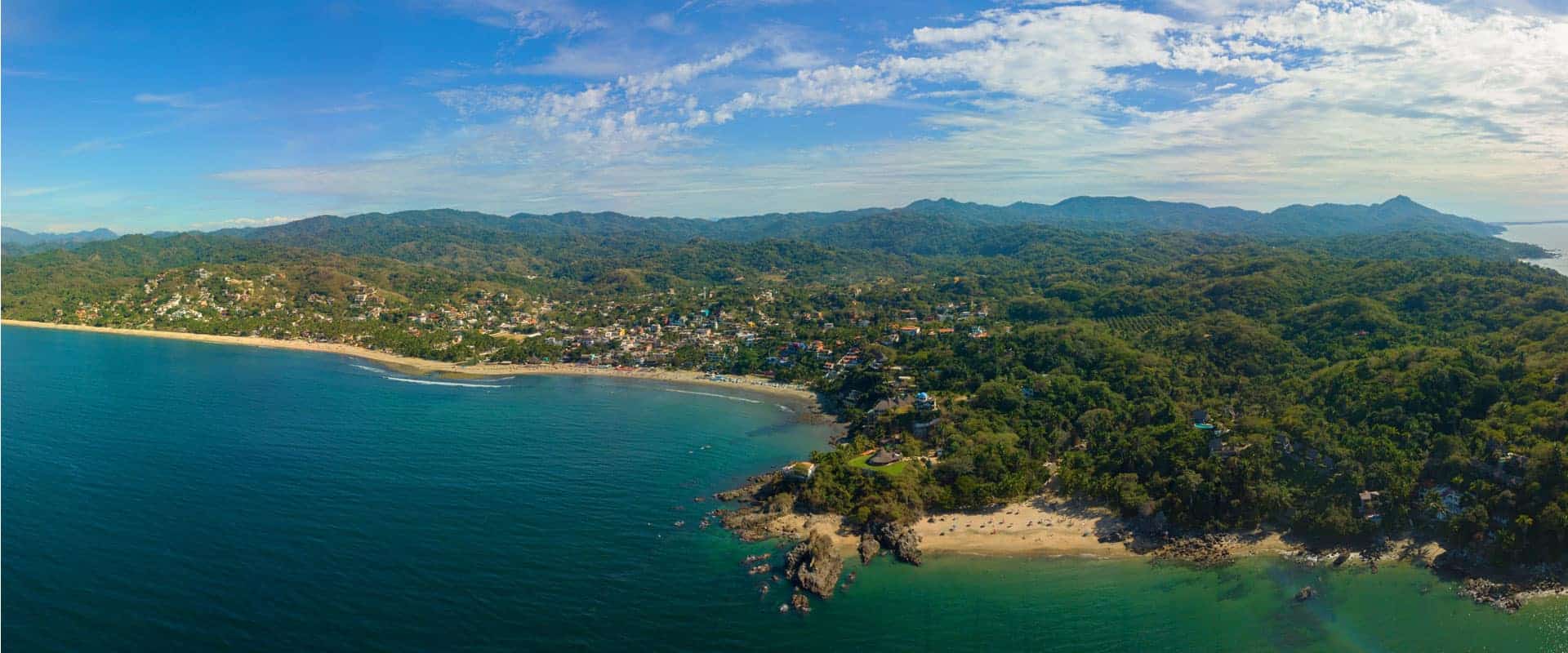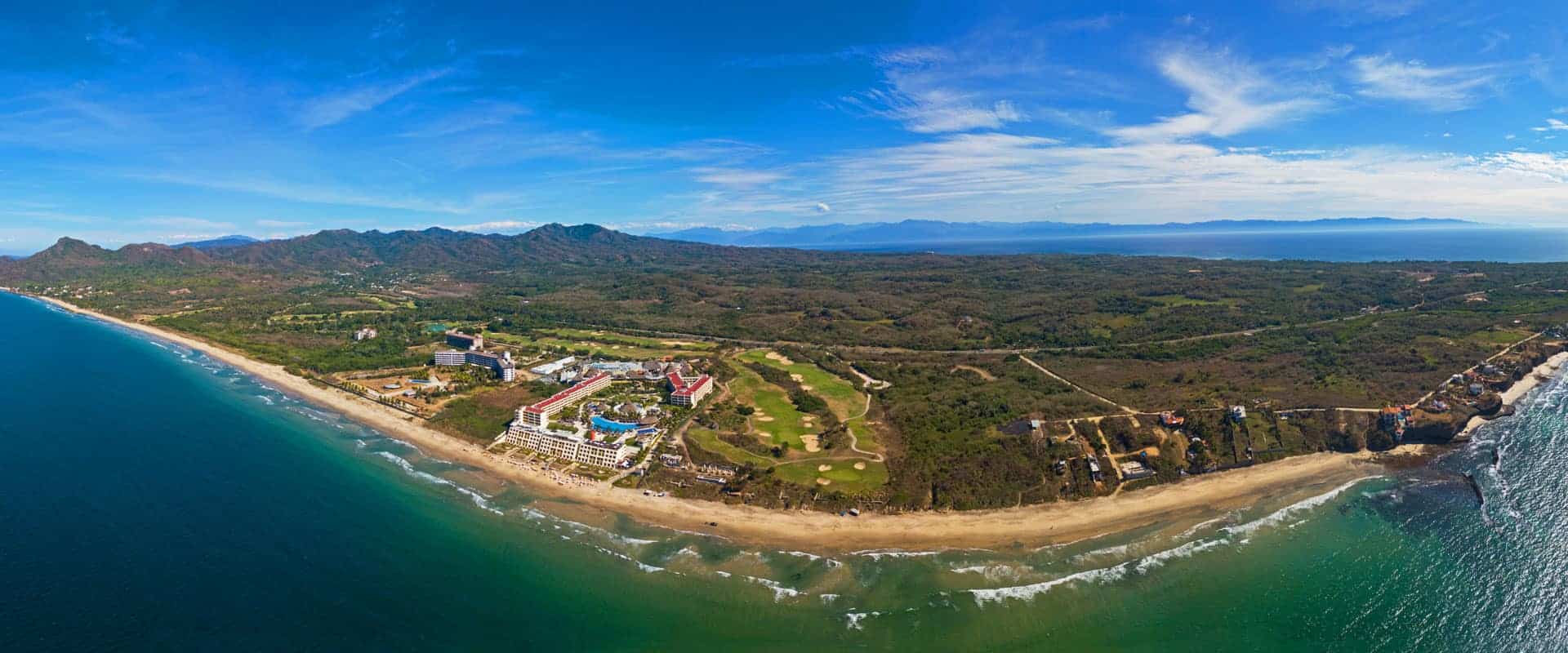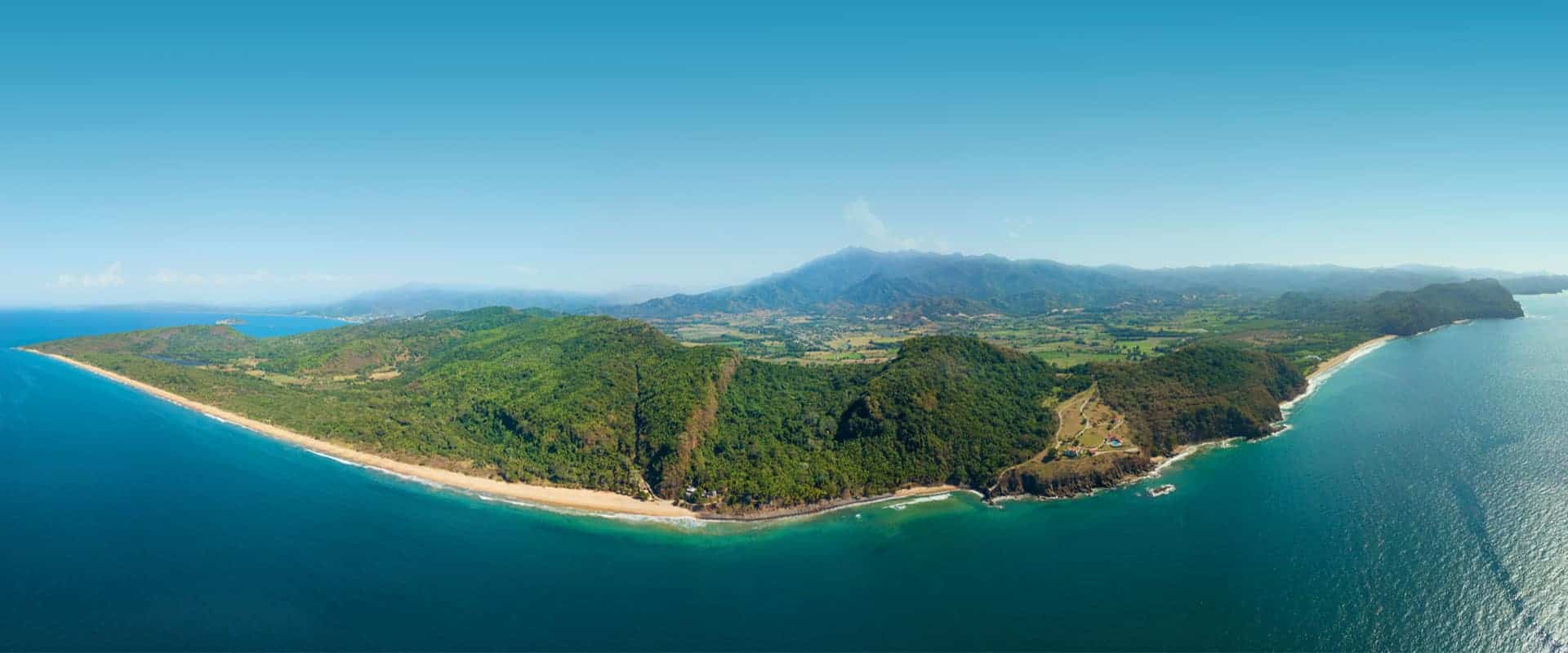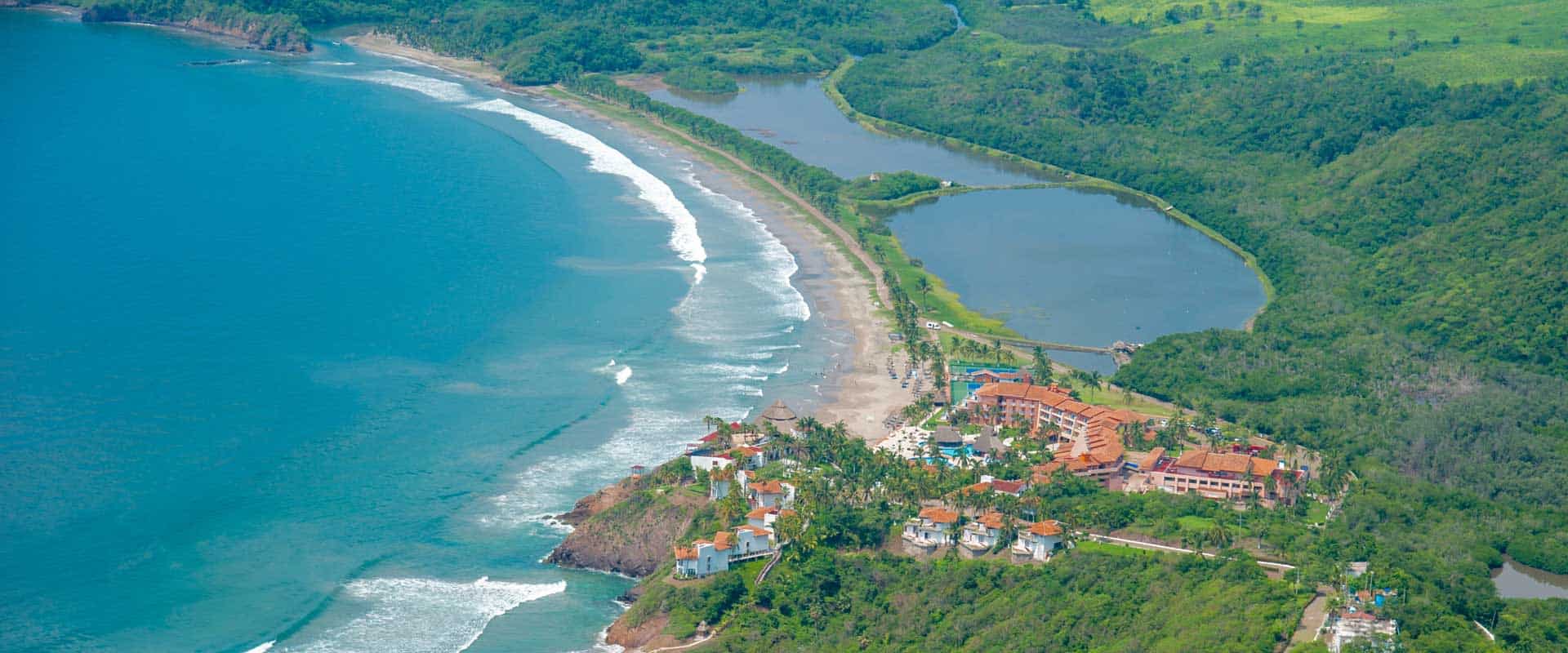
South of Puerto Vallarta, but still within the state of Jalisco, running from the southern tip of Banderas Bay (Cabo Corrientes) southeasterly to Barra de Navidad (and to Jalisco’s border with the state of Colima), lies a spectacular coastline that, for the most part, has largely avoided major development. It consists of just a few small beachside towns scattered along its coastline, interspersed by a number of very high-end, quite private, luxury low-density resort destinations.
Costalegre begins with the coastal mountain peaks at the point of Cabo Corrientes, which is lavishly covered in tropical forest, that drops quite precipitously to a rocky coastline interspersed with small coves and picturesque beaches. As the terrain slopes downward and southward it becomes flatter and dryer, more arid, nearly dessert-like. This continues on for miles, nothing but beach and saltwater lagoons, with just a few outbreaks of rock until reaching Chamela where the coast once again becomes rugged and the foliage more lush, extending right down to Barra de Navidad, the southern border of Costalegre.
One thing all visitors to Costalegre will soon discover is that there isn’t a lot going on here, but that’s exactly what makes it special.
There are very few towns along this coastline, most, such as Barra, La Manzanilla, Melaque, Pérula or Tenacatita, are just very small seaside, fishing villages. Barra de Navidad, the largest, has only about 10,000 residents. The rest are much smaller.
There are also a number of three star hotel resorts, usually all-inclusive, remotely located, all by themselves, to offer that stranded-on-a-desert-island type impression to its guests. And then the mark jumps up to five-star plus hotel resorts, such as the Four Seasons Tamarindo, Cuixmala, the Careyes Hotel, Las Alamandas and the much larger Grand Isla Navidad, that offer exceptional experiences for an exceptional price. There really isn’t much in between.
The same goes for real estate. There’s low-end real estate opportunities in some of these small towns, and then there’s very upscale, luxurious estate properties within very private communities, with again, little in between.
“Low-density” is key when describing any of the real estate projects that can be found along this coastline. Added to that should be “low-key”, as these projects, for the most part, are not open to letting just anyone know about what they have to offer. It is more like a private club where it can be difficult to find out what it entails and how you can become a part of it. That, to a great extent, is part of the beauty of Costalegre. And the very large landowners in this region are doing what they can to ensure it remains that way. They’ve established urban plans that involve very low-density development, protecting the ecology and natural environment.
Costalegre is typically broken down into six sub-regions, which, starting from the north, are Cabo Corrientes, Costa Majahuas, Chamela, Costa Careyes, Tenacatita, and Barra de Navidad.
Costalegre Infrastructure
Costalegre encompasses nearly 200 km of coastline. There are, however, portions of it that are not conducive to development. About 50 km consist mostly of estuaries and flat, arid land mostly used for farming. Another 40 km are privately owned, with owners who seem to have little or no intention of selling or developing, at least not anytime soon.
The two closest airports are in Puerto Vallarta and Manzanillo, however, a new international airport in Chamela is slated to be ready in 2024, capable of receiving aircraft with up to 170 passengers. The only marina along this coastline is located in Barra de Navidad within the development of Isla Navidad.
Plans are also in place and work has been underway for some time now to improve the existing highway system. The first step was widening the stretch of highway from Boca de Tomatlan to El Tuito, the most difficult part of the whole Costalegre highway as it winds south of Vallarta through the mountains to the coastal plains. Work has been on and off over the years, but when completed it would cut at least a half hour of driving time to principal destinations in Costalegre.
A second phase involves improving and widening the highway from La Huerta to Melaque, which would provide faster access from Guadalajara, Mexico’s second-largest city, cutting access time to about three or three and a half hours for most destinations in Costalegre. Two other highway projects involve the roads to Cabo Corrientes and Tehuamixtle out of El Tuito, improving the existing roads that wind through the mountains to the coastline, which will not be easy to do or inexpensive.
Costalegre Real Estate Options
Along the coastline of Costalegre real estate seems to be situated either at the low end or the very high end, with not a lot in between. Lower-to-moderately priced properties can be found primarily in Barra de Navidad Costalegre’s largest coastal community, Melaque, and La Manzanilla, where there are good-size expat communities, primarily American and Canadian, living either full or part-time.
As the government has been working on infrastructure and better access, real estate development is underway — at differing stages by a few “players” in the region. There are six to eight of them with parcels of around 1,000 hectares along Costalegre. (To put that in perspective, Punta Mita, probably the most well-known mega-development near Vallarta, has 600 hectares.) These owners dominate the region and have considerable influence regarding the region’s development. There are then probably another 5-10 smaller players with 200 to 500 hectares, interspersed with ejidatario communities along this whole coastline.
The high-end properties that are currently available for purchase reside are primarily in Careyes, Tamarindo, and Las Rosadas in Chamela, with new projects under development such as Xala in Costa Majahuas. Isla Navidad has been offering real estate opportunities for many years that range from mid- to high-priced properties.
Large tracts of land are becoming available, and a few large investment groups are establishing master development proposals involving small boutique hotels and low-density homes, home sites and condominium opportunities with common amenities such as golf and marinas — but more are just providing the natural environment with its estuaries, rolling sand dunes and incredible beaches just as they are.
